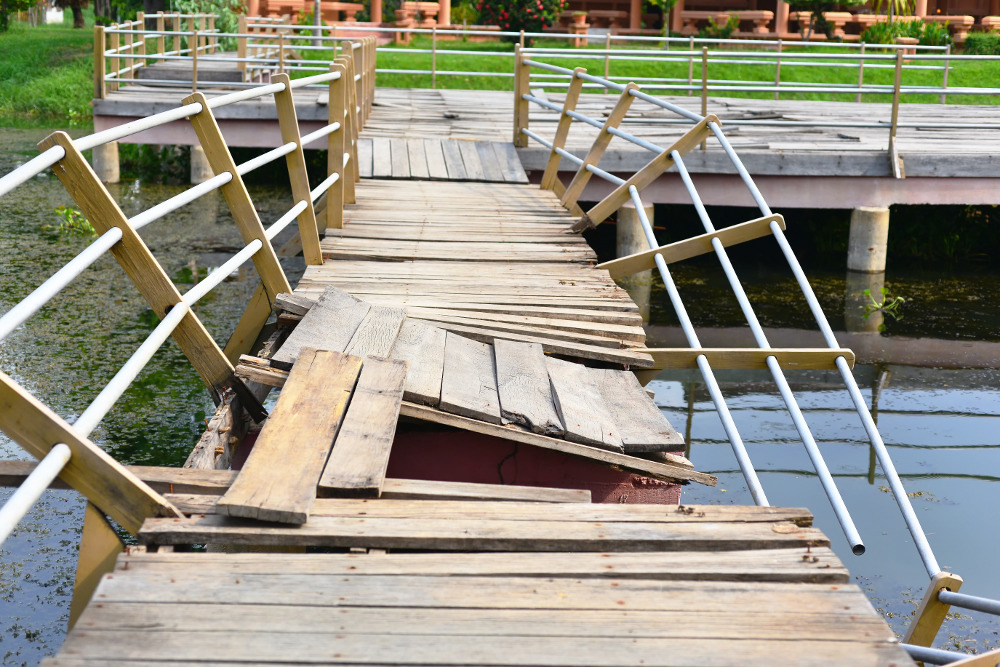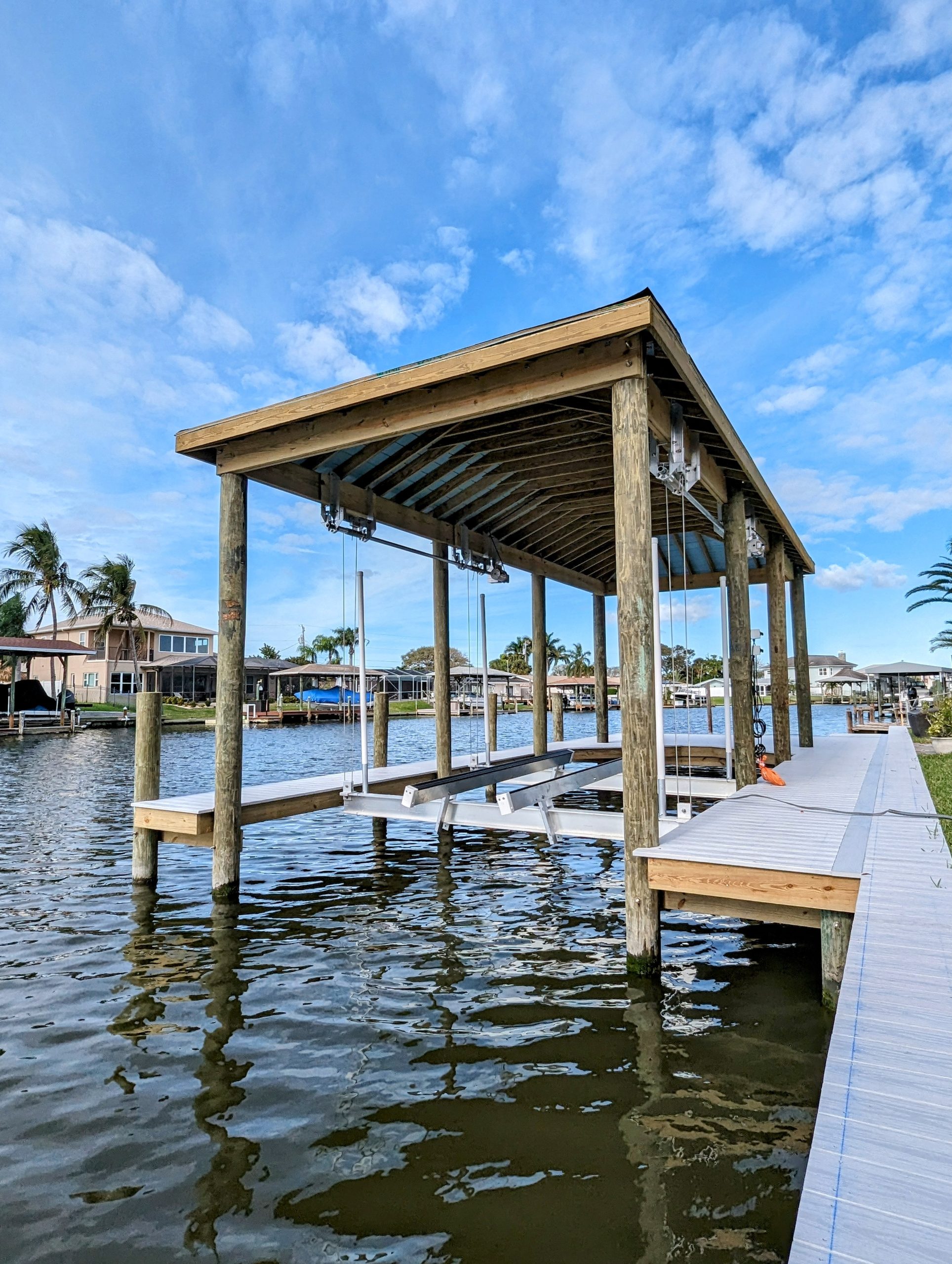How to Choose the Right Solution for Your Dock Repairs
Wiki Article
Reliable Dock Fixing Techniques: Making Certain Architectural Integrity
Making sure the structural stability of docks through reliable repair work strategies is critical for the durability and safety of aquatic facilities. This involves a multi-faceted method beginning with detailed inspections making use of innovative technologies like sonar tools and from another location operated cars (ROVs) to discover both noticeable and hid damages. Ultimately, choosing the best repair service materials, such as corrosion-resistant alloys and composite materials, is important for sturdiness. Structural support methods, consisting of the implementation of cross-bracing systems and load-distribution plates, play a vital role in mitigating stress points. However, the significance of these methods ends up being evident when exploring sophisticated repair service techniques and preventative upkeep techniques.Evaluating Dock Damages
Examining dock damages is an important primary step in making sure the structural integrity and safety of any kind of docking facility. This preliminary assessment entails a comprehensive assessment to identify both surprise and visible damages. Key elements to check out include the dock's foundation, pilings, decking, and equipment. Each component should be scrutinized for indications of wear, rot, deterioration, or various other kinds of degradation that can endanger the architectural stability.Structural designers or qualified inspectors generally carry out these evaluations using specialized strategies and tools. Underwater examinations could employ sonar tools or remotely ran vehicles (ROVs) to discover immersed damage. Above water, aesthetic evaluations are complemented by utilizing moisture meters and various other diagnostic devices to reveal underlying problems not instantly noticeable to the nude eye.

Finding Repair Service Products
Picking the suitable repair products is a pivotal action in the dock reconstruction process, one that directly influences the durability and performance of the repaired structure. Material option need to be driven by aspects such as environmental conditions, load-bearing demands, and compatibility with existing dock elements. Wood is a conventional option for anchors due to its natural strength and aesthetic allure. Selecting the best type of timber, such as pressure-treated lumber or naturally rot-resistant species like cedar or teak wood, is critical to hold up against marine settings.Along with wood, composite products are significantly prominent because of their sturdiness and reduced maintenance requirements. Compounds, generally made from a blend of plastic and timber fibers, use superb resistance to rot, bugs, and UV damages. For metal docks, selecting corrosion-resistant alloys such as galvanized steel or marine-grade light weight aluminum is important to avoid rust and guarantee architectural honesty in saline water conditions.
Epoxy materials and marine-grade sealers are indispensable for fixing fractures and securing joints, offering a water resistant obstacle and boosting the dock's general toughness. By meticulously picking premium products, dock repairs can achieve resilient outcomes, thereby protecting against future degradation and guaranteeing risk-free, trusted use.
Architectural Support Methods
Effective architectural support methods are important in making certain the stability and long life of dock repairs. One fundamental approach entails making use of steel or composite support bars (rebar) within concrete frameworks. Rebar supplies extra tensile toughness, stopping fractures and distributing lots a lot more evenly. This approach is particularly effective for docks subjected to hefty tons or extreme ecological conditions.Another important technique is the application of fiber-reinforced polymers (FRP) These materials provide high strength-to-weight proportions and superb resistance to corrosion, making them excellent for enhancing concrete or wood anchors. FRP can be used in sheets or strips and bound with epoxy materials to boost architectural honesty.
Bracing and securing systems likewise see page play a crucial duty in architectural support. Cross-bracing, making use of metal or wooden light beams, can neutralize lateral forces, lowering swaying and activity. Anchoring systems, such as helical piers or driven piles, provide a steady foundation by transferring loads to much deeper, more stable soil layers.
Finally, the assimilation of load-distribution plates can assist distribute weight a lot more equally throughout the dock's surface area, minimizing local stress points. These methods jointly make certain that docks continue to be durable and safe, capable of holding up against the rigors of their functional setting.
Advanced Fixing Techniques

One more sophisticated technique includes underwater welding, which allows for fixings to be performed without the need to dewater the area. This approach is particularly useful for attending to structural problems in immersed dock components, guaranteeing marginal interruption to procedures. Enhanced welding techniques, combined with robot systems, supply precision and dependability, consequently extending the life-span of the dock.
Furthermore, cathodic defense systems are applied to stop corrosion in metal dock frameworks. By using sacrificial anodes or impressed current systems, these techniques properly minimize the electrochemical procedures that lead to product deterioration.
Finally, advanced monitoring modern technologies, view such as structural wellness tracking (SHM) systems, supply real-time information on the problem of dock frameworks. These systems enable aggressive maintenance and timely interventions, ultimately making sure the long-term architectural integrity of the dock.
Maintenance and Avoidance
Upkeep and avoidance are basic principles that underpin the long life and security of dock structures. Normal inspections are paramount, permitting very early detection of damage, possible weaknesses, and environmental effects. A positive strategy, entailing routine look for corrosion, rot, and architectural changes, mitigates pricey repairs and prolongs the dock's operational life.Preventative measures should consist of applying protective finishes to steel components to protect versus corrosion and using treated wood to withstand degeneration. Additionally, making sure correct drain and ventilation can prevent water accumulation, which is an usual reason of architectural destruction. Incorporating quality materials and adhering to producer standards throughout building and construction and repair work phases also play critical functions in boosting longevity.

Training employees in dock upkeep ideal methods guarantees consistent application of precautionary steps. Leveraging technical developments, such as drones for inspections and sensing units for real-time monitoring, can additionally enhance upkeep initiatives. By focusing on upkeep and prevention, dock owners can make certain architectural honesty, functional safety, and affordable administration over the dock's life expectancy.
Verdict
In verdict, maintaining the structural integrity of aquatic centers demands comprehensive dock fixing methods. Thorough evaluations making use of advanced tools uncover both visible and hid damages, while the choice of suitable repair work products improves durability. Executing architectural support methods addresses stress factors successfully. Advanced repair service strategies, combined with regular upkeep methods, make sure the dock continues to be secure and functional under varied ecological problems. Taking on these approaches dramatically lengthens the life expectancy and performance of aquatic framework.Making sure the structural honesty of docks through effective repair work methods is extremely important for the long life and safety of aquatic centers.Choosing the ideal repair work materials is a pivotal action in the dock repair process, one that straight influences the long life and efficiency of the repaired structure.Efficient structural support techniques are critical in ensuring the stability and longevity of dock repairs. By focusing on upkeep and prevention, dock proprietors can make sure architectural integrity, functional safety, and economical monitoring over the dock's life-span.
In conclusion, keeping the architectural integrity of aquatic facilities demands comprehensive dock repair methods.
Report this wiki page